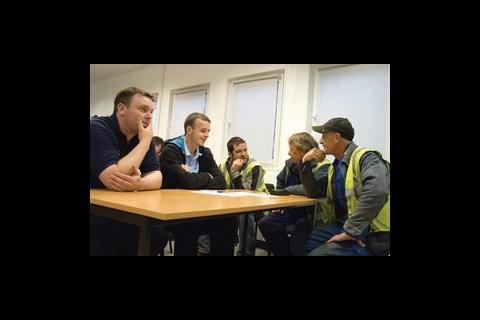This award is for the organisation that can show that health and safety issues are at the top of its agenda
Winner
Balfour Kilpatrick
The judges applauded Balfour Kilpatrick for achieving a 78% improvement in accident statistics over 10 years through a continuous set of initiatives. These include the launch of a safety award, with one presented to an apprentice who challenged a director for not wearing correct PPE.
The latest campaign, called Whatever it Takes! Be Safe, seeks to put ownership of safety issues in the hands of every individual in the company. The four themes – communication, leadership, engagement and ownership – helped to cut the AFR further. Last year it was halved to the lowest-ever figure of 0.16, and several of the firm’s offices achieved a zero AFR.
The campaign was summed up in a behavioural safety module, attended by 2,100 Balfour Kilpatrick staff and contractors.
Runners-up
Haden Young (highly commended)
The firm’s new safety campaign, called Work Safe, Home Safe, set a target of reducing the AFR to 0.20. It achieved a level of 0.19, with more than three quarters of sites being injury free. The initiative began with workshops for directors, with actors playing the roles of staff who were not behaving safely. The workshops were extended to staff and clients. “It gives people reasons to change,” one worker said of the campaign.
Faber Maunsell
A health and safety test was introduced for employees, aimed at assisting individuals in developing and honing their skills, knowledge, training and experience. The test is in two parts, firstly examining whether designers have the necessary basic knowledge required to deliver their duties. The second part examines discipline-specific issues. The use of a self-learning package makes this knowledge and assessment accessible and convenient, increasing staff buy-in.
NG Bailey
The company introduced a “zero tolerance to accidents” commitment in 2007. A large proportion of its £3m a year training package is delivered with a focus on reducing the number of RIDDOR reportable accidents. The training has improved staff understanding of roles, responsibility, best practice and impact of actions, and therefore encouraged employees to take ownership of their individual behaviours and habits.
Sinclair Knight Merz
As part of SKM’s safe practices campaign, called Live-it, each employee completes a personal practice plan to help them and to help the firm move forward proactively on health and safety issues. The programme has been rolled out to all 6,000 staff, who revisit their plans in their six-month appraisals. SKM has also sold the Live-it concept to two of its biggest clients.
WSP
WSP has introduced a method of communicating residual risk information using graphical representation. Symbols designed to be used in a descending order of priority, depending on the nature of the residual risk, are employed with notes to communicate the risk information to be provided.
Source
Building Sustainable Design























